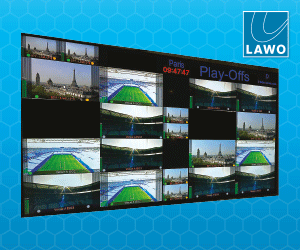More than half of Ramadan viewership in the APAC and MENA regions now takes place online.
Ramadan 2025 has emerged as a defining moment in the global media calendar, with record-breaking content consumption across traditional television and digital platforms. According to a comprehensive report by the Media Rating Company (MRC), 13.3m unduplicated TV viewers tuned in during the holy month, averaging 9.1m viewers daily. Viewers spent an average of four hours and 35 minutes watching TV each day, generating a record-breaking 72.7bn target rating points (TRPs).
According to a report made by DICM, the evolving media habits of audiences across MENA, APAC and Africa reveal a strong shift toward digital content, with streaming platforms now accounting for 44% of total viewing—while satellite TV maintains a slight edge at 56%. This change marks a significant rise in digital engagement, with younger viewers in particular gravitating toward late-night streaming, especially on platforms like YouTube and TikTok.
Three out of five viewers watched TV for more than 15 days during Ramadan, a consistent trend across the past three years. High viewership spanned all nationality groups, underlining the centrality of in-home entertainment during the holy month.
Dramas and entertainment shows dominated screens, with MBC’s Yawmyyyat Rajol Anis leading the series category with an 8.93% rating, followed by Jak Al Elm and Share’ Al A’sha. In the entertainment genre, Ramez Elon Masr topped the charts with a 5.43% rating, alongside other popular programmes like Hekayat Wa’d and Seen. Saudi networks SBC and others also gained traction with local favourites including Ifttarona Ghayr and Nakhwah.
A total of 201 series were released during Ramadan across the five main Arab regions. Egypt led with 42 series, followed by the Gulf with 60, the Maghreb with 52, the Levant with 26 and Iraq with 19. Genres that resonated most included faith-based programming, cooking shows and comedy, while short-form content thrived particularly in APAC and Africa, blending tradition with modern storytelling techniques.
Digital platforms played a major role in brand discovery and audience engagement. Over 50% of Ramadan viewership in MENA and APAC occurred online, and 28% of MENA audiences engaged with brands through social media. Influencer-driven campaigns on TikTok and Instagram Live flourished, especially in North African and sub-Saharan markets.
Advertising spend during Ramadan also surged, with regional media investment expected to hit $1.1bn. Influencer marketing alone accounted for up to 40% of brand budgets. However, 71% of consumers expressed concerns over ad saturation, indicating a rising sense of content fatigue during the season.
As Ramadan continues to evolve into a powerful cultural and commercial moment, the need for platform-specific content and authentic storytelling is more pressing than ever. The success of Ramadan 2025 underscores the opportunity—and responsibility—for broadcasters, advertisers and content creators to strike a thoughtful balance between faith, tradition, and innovation.

















































































